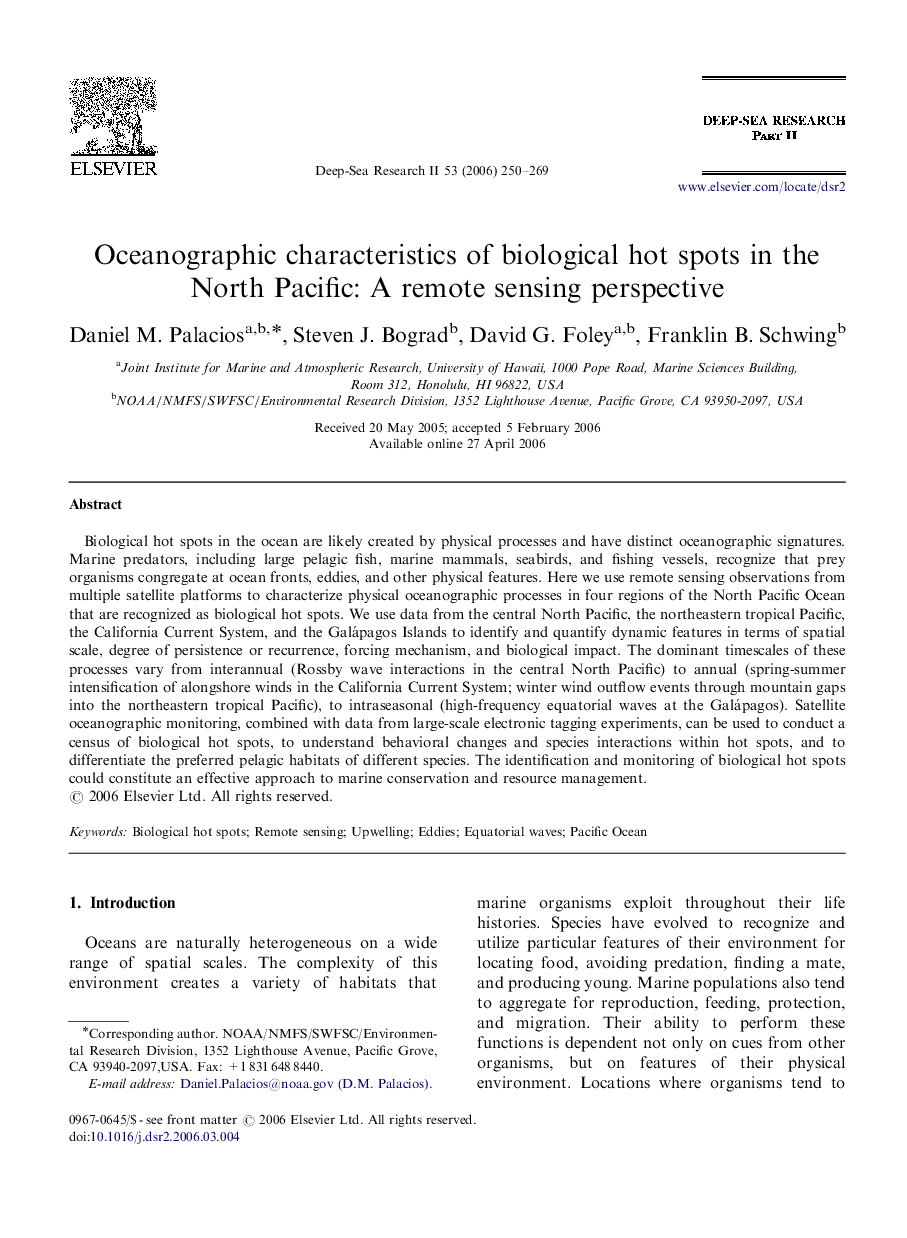| Article ID | Journal | Published Year | Pages | File Type |
|---|---|---|---|---|
| 4537871 | Deep Sea Research Part II: Topical Studies in Oceanography | 2006 | 20 Pages |
Biological hot spots in the ocean are likely created by physical processes and have distinct oceanographic signatures. Marine predators, including large pelagic fish, marine mammals, seabirds, and fishing vessels, recognize that prey organisms congregate at ocean fronts, eddies, and other physical features. Here we use remote sensing observations from multiple satellite platforms to characterize physical oceanographic processes in four regions of the North Pacific Ocean that are recognized as biological hot spots. We use data from the central North Pacific, the northeastern tropical Pacific, the California Current System, and the Galápagos Islands to identify and quantify dynamic features in terms of spatial scale, degree of persistence or recurrence, forcing mechanism, and biological impact. The dominant timescales of these processes vary from interannual (Rossby wave interactions in the central North Pacific) to annual (spring-summer intensification of alongshore winds in the California Current System; winter wind outflow events through mountain gaps into the northeastern tropical Pacific), to intraseasonal (high-frequency equatorial waves at the Galápagos). Satellite oceanographic monitoring, combined with data from large-scale electronic tagging experiments, can be used to conduct a census of biological hot spots, to understand behavioral changes and species interactions within hot spots, and to differentiate the preferred pelagic habitats of different species. The identification and monitoring of biological hot spots could constitute an effective approach to marine conservation and resource management.
